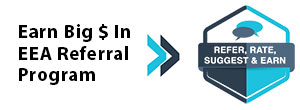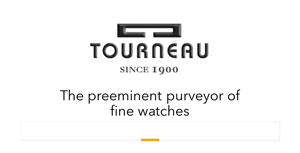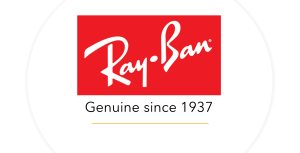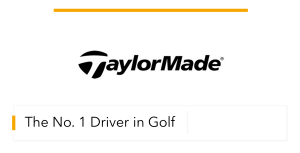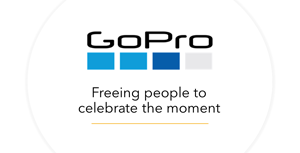What the Recognition Field Can Learn From the Incentive World in the Coming Economy
By Bruce Bolger

Why Incentive Firms Are Better Positioned Than Recognition Firms
The Pay for Performance Incentive Model
How This Applies to Recognition
Click here for EEA sponsors; here to subscribe, and here for an RRN media kit.
What type of service would you like to provide in this type of economy? One that is based on a pay-for-performance model in which your costs are connected to outcomes. Or, one that is essentially a fixed cost with promises and/or assumptions about value creation, but nothing sufficiently substantiated to have an impact on the bottom line.
This article addresses why incentive companies are better positioned to thrive in the coming economy than recognition firms and what the recognition field can potentially learn from. The potential boils down to what everyone in the industry must believe: when properly designed, both incentive and recognition programs generate tangible results often measurable in terms of sales or clearly measured productivity, quality, and cost management objectives, so why not employ a pay-for-performance model?
Why Incentive Firms Are Better Positioned Than Recognition Firms .png)
No Bureau of Labor Statistics or other government agency independently tracks the performance of the IRR (incentives, rewards, and recognition) business. From my vantage point, all signs point to growth on the incentive part of the business while the recognition field struggles with less demand or client switching, except for those moving to simple reward platforms like Awardco.com or Tremendous integrated with Slack, Teams, or Workday that essentially eliminate the need for third-party program management platforms.
Obviously, seeing no serious value from such companies, organizatios are simply doing it themselves. This observation is based not only on confidential conversations with industry executives but on the increase in management turnover at recognition firms; more focus in marketing on selling recognition days and events by traditional recognition firms, such as Appreciation days, than on selling programs; and an increase in claims about benefits in terms of employee retention or engagement but with little indication this reflects what they have accomplished for customers.
To IRR industry followers, this is ironic, because during the 2000s-2020s, when venture capital and private equity invested in the IRR space, it was mostly in recognition technology, not the companies that focus on sales, dealer, and consumer incentives. In fact, without naming names, the traditional leaders in the incentive business, when trying to enter the recognition field, met with overwhelming resistance from human resources management with whom they generally had no relationships. Not accustomed to the concept of variable pay for performance often part of sales, channel and customer engagement programs, human resources buyers often placed much more attention on the recognition web site and employee experience than on any type of program design based on return-on-investment measurement common in a sales culture.
The Pay for Performance Incentive Model
For decades, incentive companies in the sales and channel arenas have thrived without outside investment on a clear pay-for performance model. Yes, the program will include setup and customization fees, and costs related to planning technology, and implementation, but the final cost is based on the degree to which the in-house or channel sales and service people achieve their goals. As much as 75% of the budget of an effectively designed program is based on actual measurable results. if folks don't perform, they don't get rewarded. This helps explain why the companies that use these programs rarely need research to convince them to do it, but rather ideas on how to make the programs work more effectively.
This was one of the key benefits the founders of the incentive field promoted back in the late 1900s, and which remains the foundation of the incentive business today. See this recent article in RRN: Demystifying Incentive and Recognition Pricing Through Pay for Performance
Today’s incentive companies with their basket of engagement solutions and technologies and program design experience don’t need to have inhouse rocket scientists to design classic open-ended incentive programs for sales, service, or channel partner owners and employees to give purpose, meaning, and fun to everyday goals; engage people in useful information through games or tests to help them perform; make it easy to share success stories or case studies to learn from; and make people feel personally appreciated when they attain goals or simply go out of their way to do the right thing.
This pay-for-performance model has sustained dozens of incentive firms serving medium- to large companies around the world because when people feel inspired to focus on their goals, stay up to date with effective practices, they generally achieve their goals to the benefit of all involved. The challenge is that this model is alien to most of the private equity or venture capital firms that have funded this industry: they seek a highly scalable Saas or similar technology model when engagement depends on program design, implementation, measurement, and continuous improvement.
How This Applies to Recognition
The same approach applies to recognition but is much less frequently applied. Most programs are based on a fixed budget that fits into the process at most large organizations. Almost every unit of employee engagement in terms of retention, referrals, cost-enhancing ideas, extraordinary acts, can be measured either monetarily or in terms of impact on the organization’s purpose, goals, objectives, and values, but most organization's don't bother to do so. The proof is that not one incentive or engagement technology we have seen includes an easy way to identify the return-on-investment of their programs in dollars and cents.
As supported by this research report published today in RRN, effectively designed employee engagement programs have a high probability of increasing performance over the status quo. Establish a program with a clear purpose, goals, objectives, and values; give each employee a specific goal and an aspirational award to strive for when possible; provide ongoing support through the recognition technology to share information; express appreciation and encouragement along each person’s journey as well as that of the entire team or organization. Make work fun and feel like family all for the purpose of achieving the team or organizational goal and sharing in the success.
Recognizing that employee recognition called for its own need for metrics, the Incentive Research Foundation worked with the American Productivity and Quality Center in the early 2000s to create the Master Measurement Model for Employee Performance. Based on statistical process controls long used in quality management, it provides a clear roadmap on how to translate almost any type of employee engagement into a measurable process.
Separately, the Birmingham, AL based ROI Institute has produced a complete guide to measurement. Over the last few years, the field of human capital analytics has arisen providing significant data demonstrating the connection between highly engaged employees and financial performance. This includes the compelling Human Capital Factor, developed by the analytics firm Irrational Capital, demonstrating a direct connection between high levels of employee engagement and future equity value creation. The Enterprise Engagement Alliance offers multiple tools to measure tangible value creation through people in organizations, including an evaluation service to help solution providers and their clients independently evaluate the financial or other impacts of their engagement efforts.
Recognition firms employing these tools can offer a compelling proposition: pay for performance.
Enterprise Engagement Alliance Services
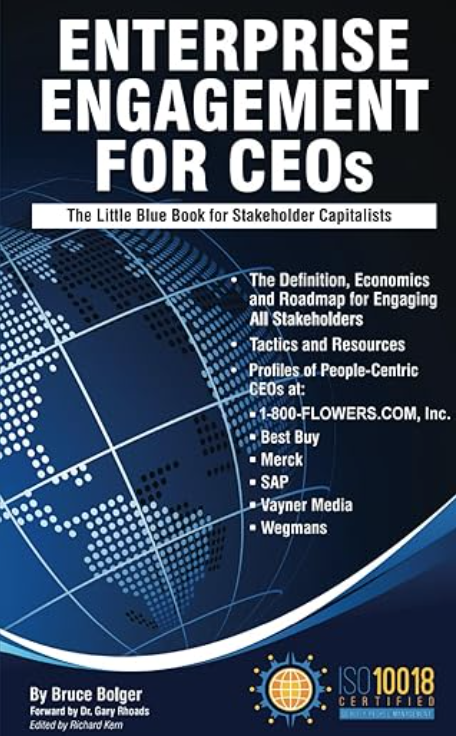
Celebrating our 15th year, the Enterprise Engagement Alliance helps organizations enhance performance through:
1. Information and marketing opportunities on stakeholder management and total rewards:
ESM Weekly on stakeholder management since 2009; click here for a media kit.
RRN Weekly on total rewards since 1996; click here for a EEA YouTube channel on enterprise engagement, human capital, and total rewards insights and how-to information since 2020.
2. Learning: Purpose Leadership and Stakeholder
 Management Academy to enhance future equity value and performance for your organization.
Management Academy to enhance future equity value and performance for your organization.3. Books on implementation: Enterprise Engagement for CEOs and Enterprise Engagement: The Roadmap.
4. Advisory services and research: Strategic guidance, learning and certification on stakeholder management, measurement, metrics, and corporate sustainability reporting.
5. Permission-based targeted business development to identify and build relationships with the people most likely to buy.
6. Public speaking and meeting facilitation on stakeholder management. The world’s leading speakers on all aspects of stakeholder management across the enterprise.


